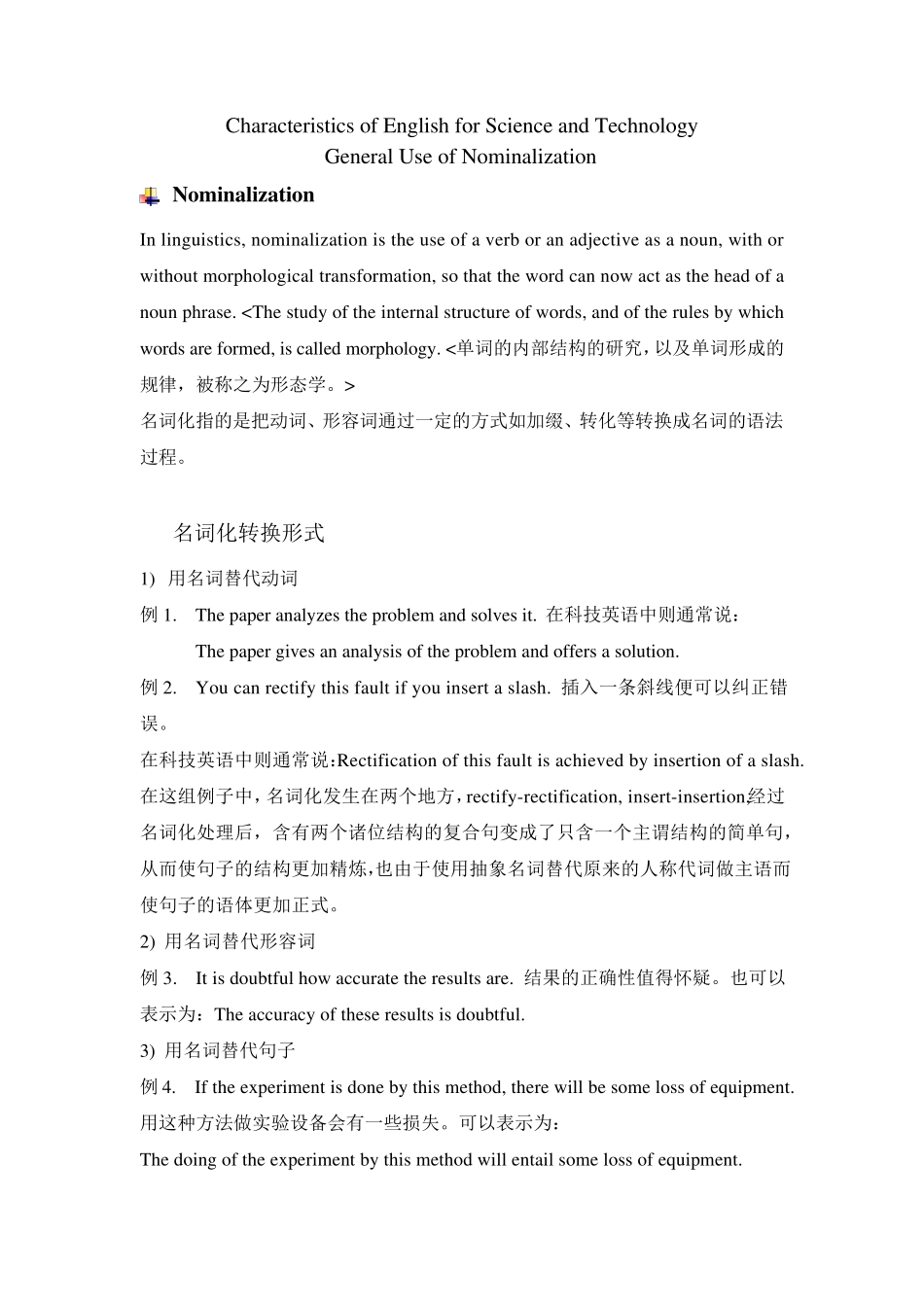Characteristics of English for Science and Technology General Use of Nominalization Nominalization In linguistics, nominalization is the use of a verb or an adjective as a noun, with or without morphological transformation, so that the word can now act as the head of a noun phrase. 名词化指的是把动词、形容词通过一定的方式如加缀、转化等转换成名词的语法过程。 名词化转换形式 1) 用名词替代动词 例 1. The paper analyzes the problem and solves it. 在科技英语中则通常说: The paper gives an analysis of the problem and offers a solution. 例 2. You can rectify this fault if you insert a slash. 插入一条斜线便可以纠正错误。 在科技英语中则通常说:Rectification of this fault is achieved by insertion of a slash. 在这组例子中,名词化发生在两个地方,rectify-rectification, insert-insertion, 经过名词化处理后,含有两个诸位结构的复合句变成了只含一个主谓结构的简单句,从而使句子的结构更加精炼,也由于使用抽象名词替代原来的人称代词做主语而使句子的语体更加正式。 2) 用名词替代形容词 例 3. It is doubtful how accurate the results are. 结果的正确性值得怀疑。也可以表示为:The accuracy of these results is doubtful. 3) 用名词替代句子 例 4. If the experiment is done by this method, there will be some loss of equipment. 用这种方法做实验设备会有一些损失。可以表示为: The doing of the experiment by this method will entail some loss of equipment. 使用名词化结构的动因 1) 名词与动词相比较,名词更具有静态性,不像动词那样生动具体和活跃。假如简单地述说一个事实或概念,仅指出动作和技术的特点,不需要动词那样生动具体,可用动作名词来替代动词。科研技术人员关心事物的现象、事实、特点, 特别是抽象化的逻辑思维,因而名词化结构的使用,尤其符合科研技术人员表达 的需要。比如...


